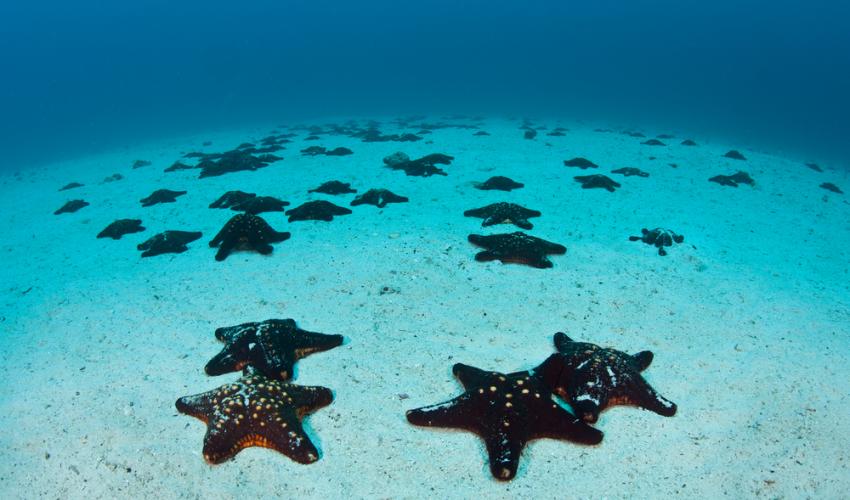EU Overseas is developing innovative solutions for ocean management and championing ocean stewardship by investing in marine and coastal ecosystems.
Taking action towards the Aichi Targets and the Sustainable Development Goals (SDGs), Europe’s Overseas regions (EU Overseas) have been leading ocean and marine wildlife protection with bold commitments, and harnessing the power of the oceans for renewable energy generation.
To name a few: in 2009 the world's first entirely high seas Marine Protected Area (MPA) was created around the UK South Orkney Islands. France established the Mayotte Marine Nature Park in 2010 and the Glorieuses Marine Nature Park in 2012, which collectively protect a total area of 110,000 km2; in 2014, New-Caledonia created the Coral Sea Natural Park, the world’s largest MPA (1,291,000 km2) to date.
In 2014, the British Virgin Islands established a shark and ray sanctuary within its exclusive economic zone (EEZ) and in 2015 the Caribbean Netherlands opened the Yanari Sanctuary for sharks and marine mammals. These, along with the AGOA Marine Mammal Sanctuary in the French Antilles, help to protect large ecological migration corridors. They also demonstrate a more integrated approach to transboundary ocean management – one that is respectful of key and emblematic species in regional waters.
In 2015, France announced the extension of its largest natural reserve in the French Southern and Antarctic Territories (TAAF), and France, Australia and the EU proposed the creation of new MPAs in the Antarctic Ocean.
French Polynesia is currently working towards designating its entire EEZ – around 5 million km2 – as a Marine Managed Area (MMA). This MMA will have regulated fishing areas, and respect and integrate existing ra’hui, traditional community-based marine resource management. It would also include Pukatai, a pilot network of six Educational Managed Marine Areas (EMMAs) in the Marquesas Islands. Pukatai aims to create a new generation of ocean stewards by providing training for youth to manage coastal zones.
The UK government recently introduced an initiative to create the world’s largest no-take (no fishing) marine reserve in the waters of the Pitcairn Islands in the Pacific, protecting a total area of 834,000 km2. In early 2016, the UK committed to designating an MPA almost as big as the UK in the Atlantic waters around Ascension Island.
Healthy oceans can also support climate commitments related to transitioning to renewable energies. Sea Water Air Conditioning systems in French Polynesia use cold water from the ocean depths to replace conventional air conditioning systems, enabling energy savings of up to 80%. Ocean Thermic Energy Conversion projects in Martinique harness the difference in temperature between surface and deeper waters to generate electricity, offering remote maritime regions the possibility of achieving energy independence.
Spanning five oceans with a combined EEZ of over 15 million km2 and hosting three of the five largest MPAs, the 34 political entities and over 150 islands of the EU Overseas are key actors in global ocean sustainable governance, championing the Aichi targets. Supporting their individual actions and fostering regional cooperation will be instrumental in achieving international goals and targets related to healthy oceans, restoring and preserving the integrity of marine ecosystems, and building resilience to climate change.











